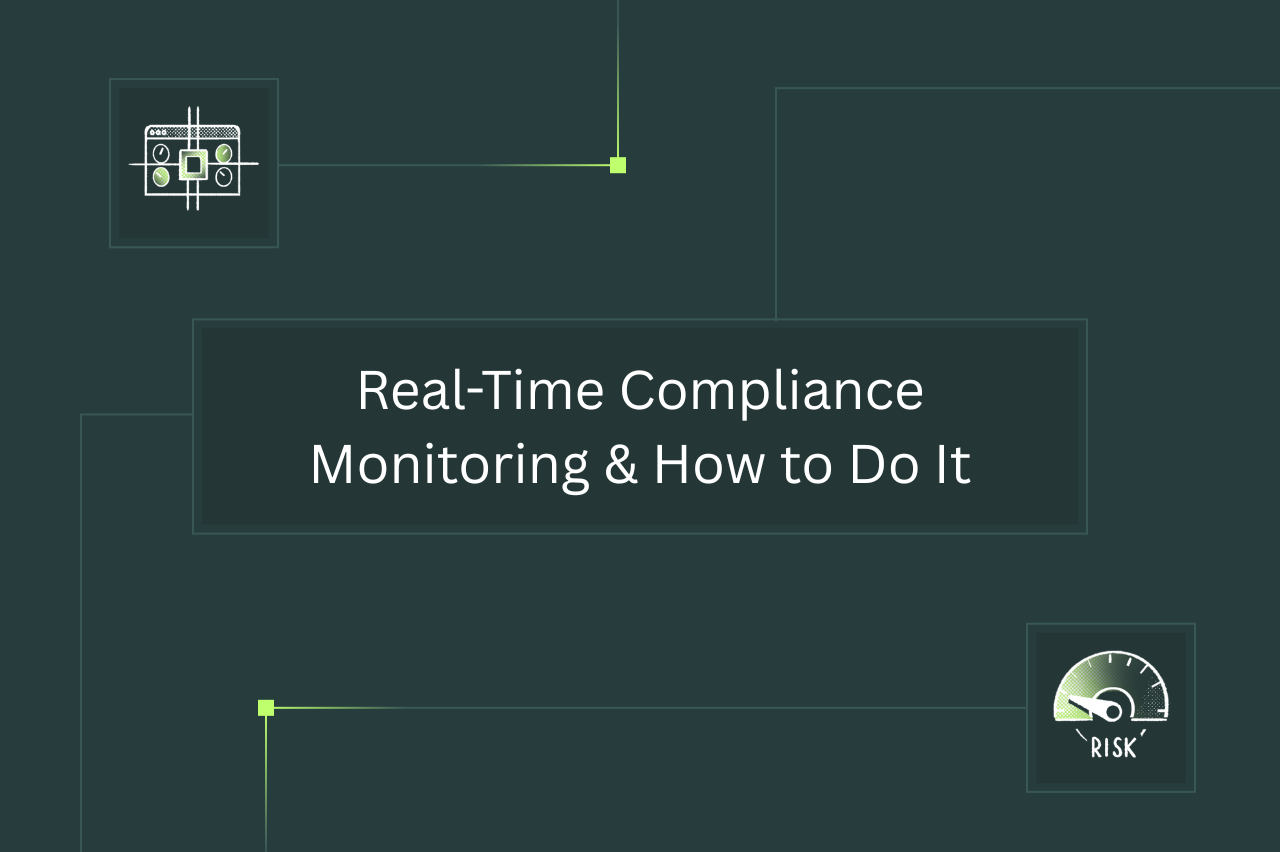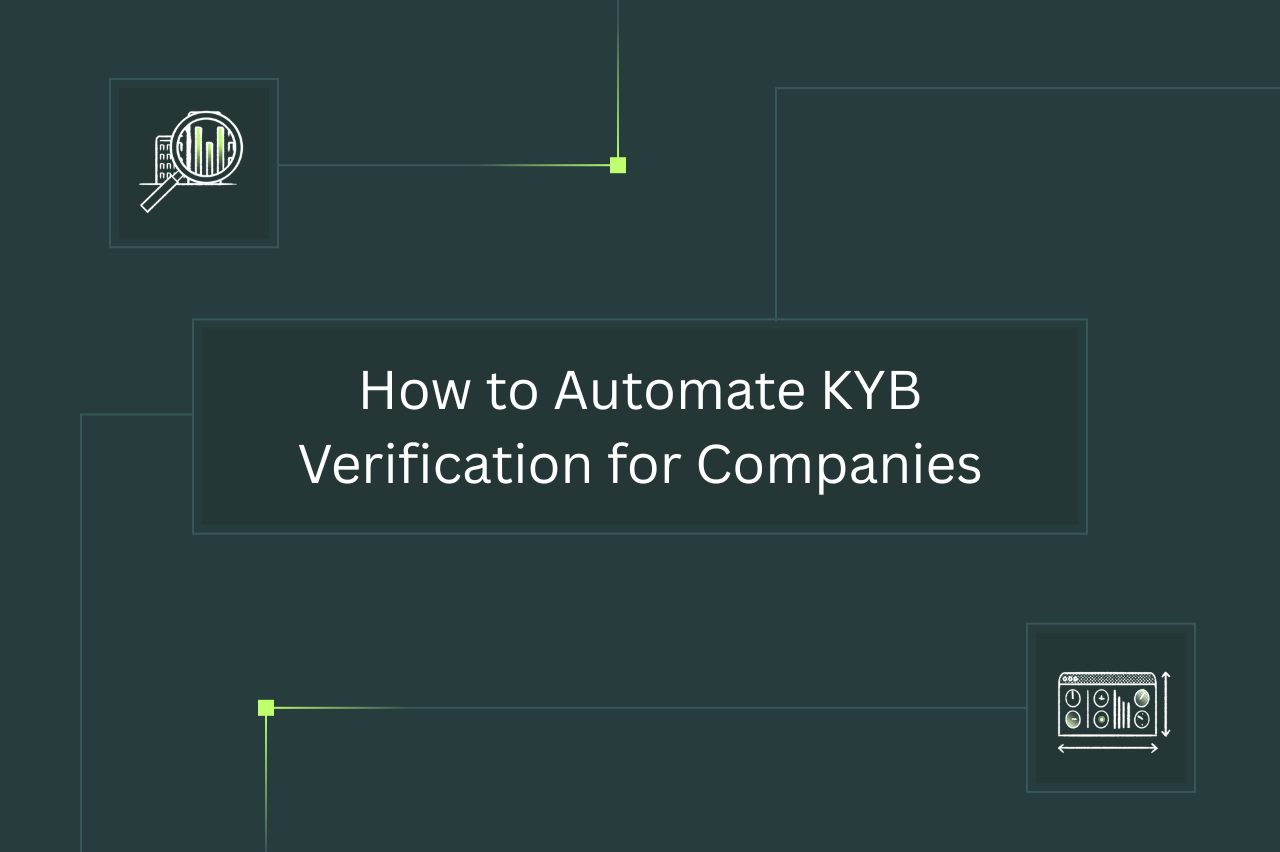In brief:
- Ongoing compliance — sometimes called continuous compliance — is when a business has systems in place to monitor assets and regulatory requirements, then proactively implement fixes and changes.
- Ongoing compliance helps businesses in regulated industries stay on top of compliance, and proactively deal with potential issues.
- Ongoing compliance requires knowing compliance requirements, identifying core assets, performing risk assessments, implementing controls, setting up automated monitoring tools, establishing cross-business communications, and thoroughly documenting all of these processes.
If you feel it’s labor-intensive for your team to periodically review your customers to catch changes to their business status, bankruptcies, or watchlist activity because it takes dedicated resources and you can only review businesses so often, you need an ongoing compliance monitoring solution.
Don’t be late to catching a change in the status of the businesses you work with, and subsequently, not have the adequate time needed to take action and limit your risk exposure to them. If you need help implementing a real-time compliance change system within your business verification process, we’ll help explain how to achieve this by covering:
- What is ongoing compliance?
- Why continuous compliance is important for businesses
- Ongoing compliance monitoring: how to set it up
To start, we’ll talk a bit more about what ongoing compliance is and why it’s beneficial for your company to achieve.
A common example would be the ability to know as soon as a business you are working with files for bankruptcy, rather than finding out weeks later when that business makes you aware of it.
The real-time advantage ongoing compliance offers can make a critical difference if you work within a regulated industry and need to take quick action when the businesses you work with change their status.
Businesses need continuous compliance monitoring when they operate within regulated industries like banking & financial services, insurance & lending, or payments. Bad actors are always figuring out methods of exploiting vulnerabilities within an existing system, so it’s imperative that your compliance stays up-to-date.
Consider this scenario: you operate within a regulated industry, and do every required component of Know Your Business (KYB) prior to onboarding a new business client, only to find out that three months into working with them, they had a lien filed against them, or filed for bankruptcy. How would your business become aware of this if you aren’t doing periodic checks against the companies you conduct business with?
Here are some key reasons why you should monitor your regulatory obligations on an ongoing basis:
1. Keep up with changing regulations
When an AML/CFT/CPF regulation is added or changed, it’s often to address a new method of committing financial crime or a vulnerability in existing compliance systems. The sooner you accommodate this change in your own operations, the smaller the window of time you’re vulnerable to the threat the new regulations are meant to prevent.
2. Get notified of bankruptcy or lien filings against your customers
Though they might have appeared free and clear during initial checks, it might be critical to your business to know if your customer has a lien filed against them, or they file for bankruptcy. Becoming aware of these changes in real-time can considerably improve your ability to act.
3. Know if your customers switch to prohibited industries
If a company you are conducting business with becomes involved in a prohibited industry, it’s critical that you know immediately to distance your business from them, and in some cases, even stop doing business with them entirely.
In addition to conducting proper prohibited business screening prior to onboarding, you want to ensure you have an ongoing compliance solution in place to make you aware of any industry changes.
4. Find out if a person or company is added to watchlists or sanctions lists
If your customer’s company itself is added to an OFAC watchlist or other sanctions list, or a company director is added to a PEP list, you want to know right away so you can take adequate action based on the regulations you are compelled to follow.
5. Generate a competitive advantage
Achieving real-time compliance makes you more attractive to your customers — both prospective and current. It lowers your risk profile, which is often an important factor when customers are choosing a business to buy products or services from.
It also speeds up the customer’s auditing work in B2B relationships, so you can start finalizing a deal sooner. And it demonstrates to existing customers that you take their safety and security seriously, increasing their trust and loyalty.
There are tools out there that can provide you with alerts related to regulatory changes and security vulnerabilities; however, these are only one component of achieving true real-time compliance monitoring. That is a process involving several other steps, so we’ll explain the best practices for each of those steps below.
1. Understand the regulations you must comply with
The first step to achieving compliance on a continuous basis is to understand the rules you have to comply with. Regulations can affect various aspects of your company, and can differ depending on where you’re operating, what industry you’re in, and who your customers are. It may take some work to map them all out, but it will help you avoid having compliance lag behind in certain areas of your company.
2. Perform risk assessments to find the focus points of your compliance
Think about your existing customers and what potential risks they pose to you. Is it important to know when someone files for bankruptcy? When they are added to a watchlist? When their UBOs or Company Officers change? All of the above?
Consider the information you need to be aware of so you can work it into the real-time monitoring system, and focus on the information that matters most.
{{related-content-block="/blog/what-businesses-get-wrong-about-compliance-risk-and-fraud"}}
3. Identify a KYB vendor that can offer real-time compliance monitoring
Find a Know Your Business solution that can offer ongoing compliance monitoring as a part of their product, and provide you with the information needed for your compliance process. For example, Middesk’s Monitoring API can automatically notify you when the business you are monitoring:
- Files for bankruptcy
- Is added to a Watchlist or Sanctions list
- There is a change in their SOS registration, including added or removed Names, Addresses, People, and Registration Status
- Obtains a new verified TIN number (when it was previously unknown)
It’s important to vet your KYB solutions by testing their ability to meet your needs, and in this case, can offer the data needed for ongoing compliance monitoring.
{{gated-content-block="/insights/how-to-run-an-effective-kyb-vendor-test"}}
4. Integrate the solution in your KYB process
Once you choose a compliance monitoring solution, you can integrate it in your existing KYB process to ensure you receive notifications when the status of a business changes. You can also build out your compliance program processes to now include how to act when these statuses change, ensuring you can capitalize on the real-time notifications and take action quickly.
5. Iterate your monitoring & customize compliance notifications
Continue to iterate this process and the way you monitor businesses, reaching full continuous compliance automation through modular monitoring on specific businesses and customized notifications.
If you only need to watch for SOS registration changes, you can update your notifications to ensure you’re not being overwhelmed with unneeded data, and instead, get only the information you need.
Continuous compliance is a moving target. It takes committed legwork over time, but it can pay off in many ways in the long run. The other good news is you don’t have to do it alone (nor should you!).
Middesk Verify supports features like webhooks, continuous monitoring, and reordering packages so you can always keep your client and partner information up to date.
To learn more about how to integrate monitoring seamlessly into your compliance process, set up a demo today. Or if you don’t want to wait, watch this on-demand product demo of Middesk Verify right now:
{{gated-content-block="/events/productdemo-verify-june-2025"}}











